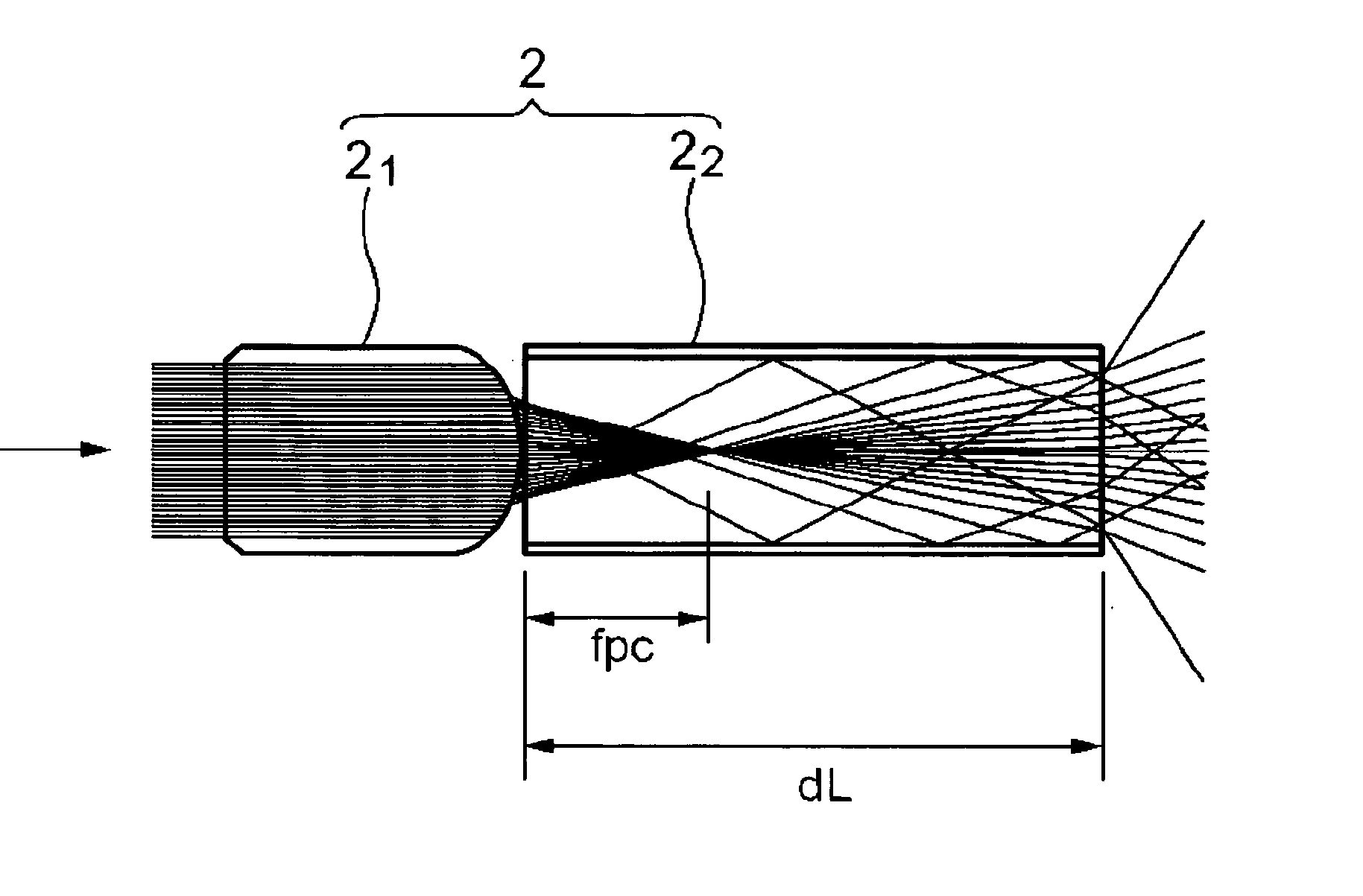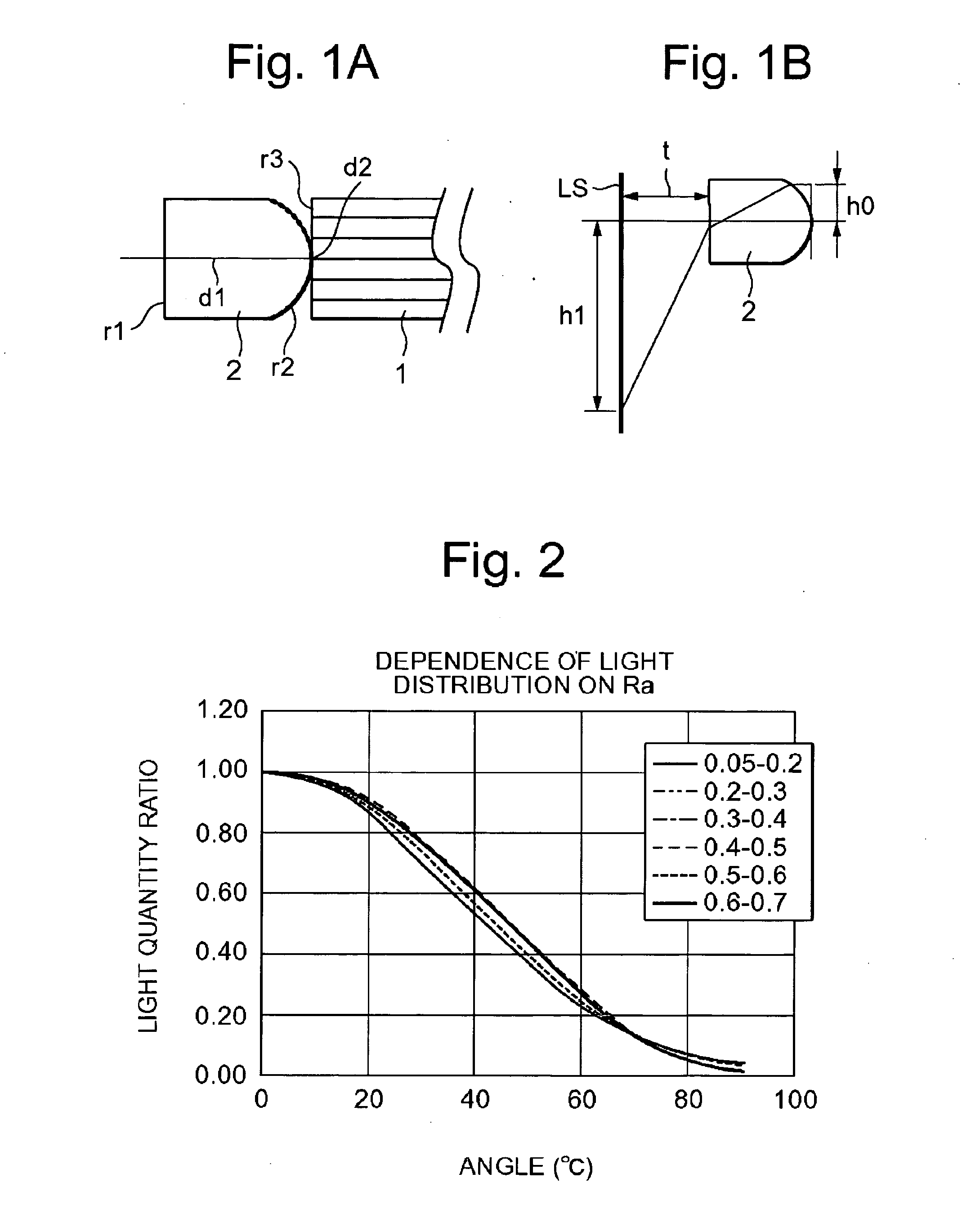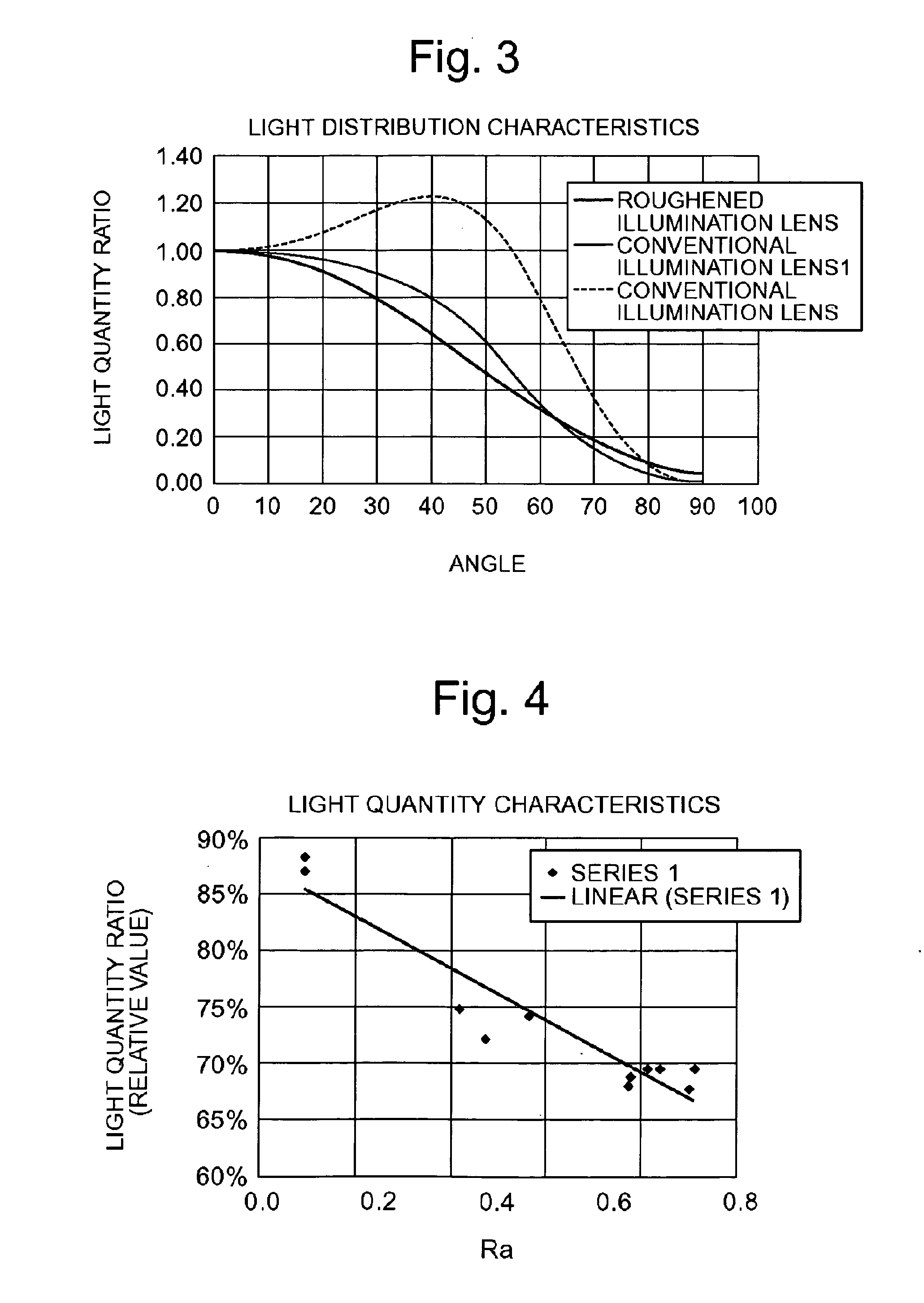Illumination optical system, illumination apparatus using the illumination optical system, and observation system provided with the illumination optical system or the illumination apparatus
a technology of illumination optical system and illumination optical system, which is applied in the direction of instruments, lighting and heating apparatus, fibre light guides, etc., can solve the problems of difficult to broaden the light distribution area to such an extent, the distribution angle exceeds 120°, and the loss is generated in the quantity of ligh
- Summary
- Abstract
- Description
- Claims
- Application Information
AI Technical Summary
Problems solved by technology
Method used
Image
Examples
embodiment 1
[0121]FIG. 1 shows diagrams of Embodiment 1 of an illumination optical system. FIG. 1A is a sectional view along an optical axis, and FIG. 1B is an explanatory view showing that illumination light parallel to the optical axis is projected via the illumination optical system.
[0122] The illumination optical system 2 of Embodiment 1 comprises a piano-convex lens having a flat surface on the object side and a convex surface on the light guide fiber bundle side. The convex surface r2 of the plano-convex lens is an aspherical surface, and the aspherical surface is roughened. This roughened surface prevents generation of light distribution unevenness and color unevenness. The plano-convex lens is disposed in such a manner that the convex surface r2 is brought into contact with an emission end surface r3 of the light guide fiber bundle 1. The arithmetic average roughness Ra of the roughened surface is about 0.3 μm. The arithmetic average roughness Ra may be in a range of 0.05 to 0.75 μm.
[...
embodiment 2
[0151]FIGS. 12A and 12B are diagrams showing Embodiment 2 of the illumination optical system. FIG. 12A is a sectional view along an optical axis, and FIG. 12B is an explanatory view showing that illumination light parallel to the optical axis is projected via the illumination optical system.
[0152] The illumination optical system 2 of Embodiment 2 comprises: a plano-convex lens 21 having a flat surface on its object side and a convex surface on the light guide fiber bundle side; and a single fiber 22. An incidence end surface r4 of the single fiber 22 is brought into contact with an emission end surface r5 of a light guide fiber bundle 1, and an emission end surface r3 of the single fiber 22 is brought into contact with a convex surface r2 of the plano-convex lens 21. The convex surface r2 of the plano-convex lens 21 is formed as an aspherical surface, and the aspherical surface is roughened. The arithmetic average roughness Ra of the roughened surface is about 0.2 μm. In Embodiment...
embodiment 3
[0184]FIGS. 14A and 14B are diagrams showing Embodiment 3 of the illumination optical system. FIG. 14A is a sectional view along the optical axis, and FIG. 14B is an explanatory view showing that illumination light parallel to the optical axis is projected via the illumination optical system.
[0185] An illumination optical system 2 of Embodiment 3 comprises: a plano-convex lens 21a having a flat surface on an object side and a convex surface on a light guide fiber bundle side; and a double-convex lens 21b. A convex surface r2 of the plano-convex lens 21a is formed into a spherical shape, and the spherical surface is roughened. In the illumination optical system 2 of Embodiment 3, the lens surface having a small radius of curvature and an intense light refracting action is roughened. Therefore, diffusing effects are easily produced, and light distribution is easily broadened. Light distribution unevenness is suppressed by the roughened surface. Moreover, since the surface disposed ne...
PUM
 Login to View More
Login to View More Abstract
Description
Claims
Application Information
 Login to View More
Login to View More - R&D
- Intellectual Property
- Life Sciences
- Materials
- Tech Scout
- Unparalleled Data Quality
- Higher Quality Content
- 60% Fewer Hallucinations
Browse by: Latest US Patents, China's latest patents, Technical Efficacy Thesaurus, Application Domain, Technology Topic, Popular Technical Reports.
© 2025 PatSnap. All rights reserved.Legal|Privacy policy|Modern Slavery Act Transparency Statement|Sitemap|About US| Contact US: help@patsnap.com



